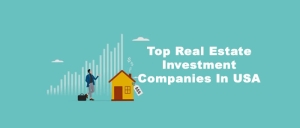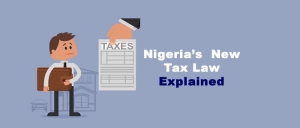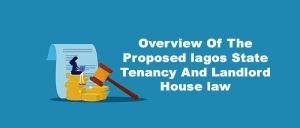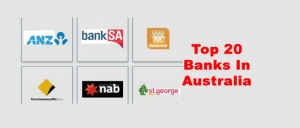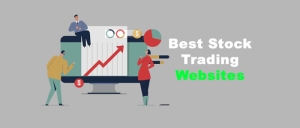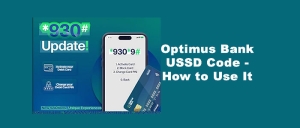
For years, the idea of making money online felt like a distant dream. I’d read stories of bloggers earning six figures, but it seemed reserved for tech gurus and marketing wizards. I was neither. I was just someone with a passion and a desperate desire to make money with blog or create an income stream that didn’t involve a time clock.
Then, I started a blog. It wasn't an overnight success. It was a grueling, confusing, and often discouraging nine-month journey. But then it happened: I made my first $1,000. That initial sum, deposited into my PayPal account, wasn't just money; it was validation. It was proof that the countless hours of writing, designing, and promoting were worth it. How to make money online for beginners.
This is the exact, no-fluff, step-by-step guide I wish I had when I started. This is how I made my first $1,000 with a blog.
Phase 1: The Foundation – Before You Write a Single Word
You can’t build a house on sand, and you can’t build a profitable blog on a shaky foundation. Skipping this step is the number one reason most blogs fail.
Step 1: Find Your Niche (The Riches are in the Niches)
My first blog was about "travel." That was my mistake. "Travel" is not a niche; it's a massive, oversaturated ocean. I was a tiny fish nobody could see. I pivoted to a specific niche: "Solo Budget Travel in Southeast Asia for Digital Nomads."
Why it worked: It was specific enough to attract a dedicated audience but broad enough to have plenty to write about. I could answer very specific questions my audience had.
Your Action: Don't blog about "food." Blog about "Vegan Meal Prep for Busy College Students" or "Keto Recipes for Instant Pot Beginners." Choose something you know about, are passionate about, and that has a monetizable audience.
Step 2: Secure Your Blog’s Home (Hosting & Domain)
A free blog on WordPress.com or Blogger screams "hobby." To be taken seriously and to have full control (especially for monetization), you need self-hosting.
My Choice: I went with SiteGround for hosting (reliable, great customer support for beginners) and bought a domain name through them for about $15/year.
Your Action: Choose a hosting provider (SiteGround, Bluehost, and WPEngine are popular starters). Pick a domain name that is brandable, easy to remember, and reflects your niche.
Step 3: Install WordPress and a Clean Theme
WordPress powers over 40% of the web for a reason—it’s flexible and powerful. After installing it through my host’s one-click installer, I chose a simple, fast-loading theme.
My Choice: I started with a free theme like Astra or GeneratePress and customized it lightly. I avoided bloated, complex themes that slow down your site. Speed is crucial for both users and Google.
Your Action: Install WordPress. Choose a lightweight, mobile-responsive theme. Don’t get bogged down in design; focus on content
Phase 2: Content is King – The Engine of Growth
With the foundation set, it was time to build the engine. Traffic doesn't come from a beautiful design; it comes from valuable content that solves problems.
Step 4: Master Keyword Research (Finding What People Search For)
I didn’t just write what I felt like. I wrote about topics people were actively searching for. This is called SEO (Search Engine Optimization), and it’s the #1 source of free, consistent traffic.
My Tool: I used “ Google’s Keyword Planner ”. (free) and the free version of Ubersuggest. I looked for "long-tail keywords"—phrases with lower search volume but less competition. Instead of targeting "best laptops," I targeted "best budget laptop for video editing 2023."
Your Action: Brainstorm questions your audience has. Type them into Google and see what auto-populates. Use a free tool to find keywords with a decent number of searches and a "low" keyword difficulty score.
Step 5: Create Pillar Content (Your Cornerstone Articles)
I focused on creating comprehensive, "10x" content—articles that were ten times better than anything else on the first page of Google. These were ultimate guides, step-by-step tutorials, and deeply researched listicles.
My Example: Instead of "Bangkok Travel Tips," I wrote "The Ultimate 3-Day Bangkok Itinerary: A Step-by-Step Guide for Solo Travelers (2023)." It was over 3,000 words, included maps, budgets, and personal anecdotes.
Your Action: Identify 5-10 cornerstone topics for your niche and pour your energy into making them the best resource on the internet. These articles will become your traffic workhorses.
Step 6: The Consistency Grind
I created an editorial calendar and published one to two high-quality articles per week, without fail. Consistency signals to Google that your site is active and builds trust with your early readers.
Phase 3: The Traffic Train – Getting Readers to Your Blog
A blog with no readers makes no money. I focused on two primary channels.
Step 7: SEO (The Long Game)
With every article, I optimized for my target keyword: placing it in the title, URL, headers, and naturally throughout the content. I built a few simple internal links (linking to my other articles) but mostly focused on creating the best answer to the search query. This is a slow burn, but after 6-8 months, it started to pay off massively.
Step 8: Pinterest (The Secret Weapon)
For visual niches (like travel, food, fashion, DIY), Pinterest is not social media; it’s a visual search engine. I created eye-catching vertical graphics for every post using Canva (free) and pinned them to relevant boards.
My Result: Pinterest drove over 70% of my traffic in the first six months before Google SEO kicked in.
Your Action:Create a business account on Pinterest. Learn how to create rich pins and use keyword-rich descriptions. Pin consistently.
Phase 4: The Monetization Moment – Turning Clicks into Cash
This is the moment you’ve been waiting for. I had to wait until I had a steady stream of traffic (about 10,000 monthly pageviews) before most of these methods became effective. Patience is key.
Step 9: Display Advertising (The First Dollar)
This is the easiest money to make. Once you have traffic, you can place ads on your site. I applied for **Google AdSense** as soon as I had a few articles. It was peanuts at first—literally $1-2 per day.
The Upgrade: Once my traffic grew, I was accepted into Mediavine (which requires 50k sessions/month). This is when ad revenue exploded. But that first AdSense payment of $32.18 was magical—it was proof of concept.
Your Action: Apply for Google AdSense. Place the ads strategically without ruining the user experience.
Step 10: Affiliate Marketing (The Real Winner)
This was how I made the bulk of my first $1,000 ( how to make money). Affiliate marketing is promoting products or services you use and love and earning a commission on any sales made through your unique link.
My Strategy: In my travel guides, I naturally linked to the backpack, travel insurance, and booking sites I recommended. In my gear reviews, I linked directly to Amazon products. I was always transparent, disclosing that I used affiliate links.
My First Big Win: I wrote a detailed review of a specific travel backpack. It ranked on Google. One day, I saw I had made a $48 commission because someone bought it through my link. I was hooked.
Your Action: Join affiliate networks like Amazon Associates, ShareASale, or CJ Affiliate. Look for products directly related to your content. Weave recommendations into your content authentically.
Step 11: Strategic Digital Product (The Final Push)
As my email list grew (yes, I started building one from day one with a free checklist offer), I had a audience I could sell to directly. I created a simple, low-cost digital product.
My Product: I bundled my three most popular itineraries into a nicely designed PDF guide and sold it for $12 via Gumroad (which handles all the payment and delivery for a small fee).
The Result: I emailed my list of about 500 subscribers about the launch. I sold 23 copies in 48 hours, making $276. This, combined with ads and affiliates, pushed me well over the $1,000 mark.
The Moment of Truth
It wasn't one single check. It was a cascade:
$412.57 from display ads (AdSense)
$488.90 from affiliate commissions (mostly Amazon and a hosting company)
$276.00 from my digital product sale
Total: $1,177.47
It took nine months of consistent work before I saw a dime. But once the snowball started rolling downhill, it picked up speed fast. The second $1,000 came just a few weeks later. The blueprint is here. The path is proven. Your niche is waiting. Stop dreaming about making money online and start building. Your first $1,000 is closer than you think. This is the answer for how can you make money online.
Conclusion: Your Turn to Build
How to make money online, making my first $1,000 from blogging wasn't a lucky break; it was the direct result of a deliberate strategy. It required building a solid foundation in a specific niche, creating content that solved real problems, strategically driving traffic, and patiently implementing multiple monetization methods. The journey demands consistency and resilience, but the reward—a proven, scalable income stream built on your own terms—is absolutely worth the effort.
This isn't a secret reserved for a select few. The blueprint is here. Your first dollar is waiting at the intersection of your passion and your audience's needs. Start building, stay consistent, and your breakthrough will come.

